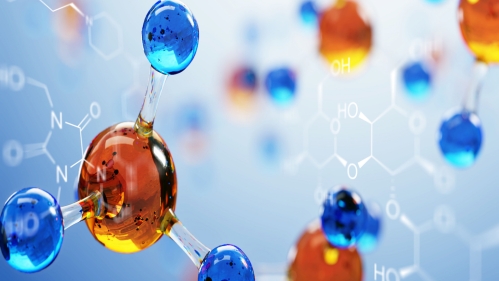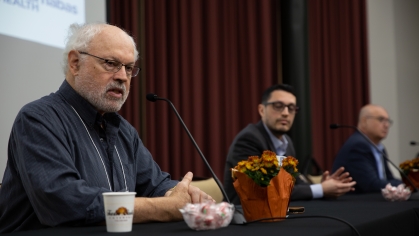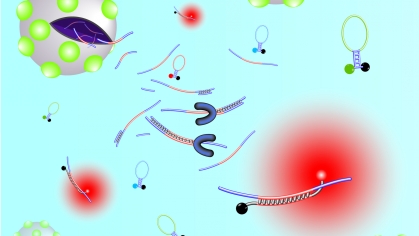Long-Term Study of Pregnant Women Finds Increasing Chemical Exposure

Pregnant women are increasingly exposed to plastics, pesticides, and other chemicals that may harm fetal development, said Emily Barrett, an associate professor of biostatistics and epidemiology at Rutgers who coauthored a nationwide study led by researchers at the University of California San Francisco and Johns Hopkins.
Many of the detected substances were replacement chemicals – new forms of previously banned or discontinued chemicals that may be just as harmful as their predecessors. The study, which looked at an ethnically diverse group of women, also found widespread exposure to neonicotinoids, a kind of pesticide that is toxic to bees.
“Even though many of these chemicals have not yet been tested to understand their health impacts, our findings are definitely cause for concern because similar chemicals have been proven harmful, particularly to developing fetuses,” Barrett said.
Using a new detection method that captures dozens of chemicals or chemical traces from a single urine sample, researchers measured levels of 103 chemicals, mostly from pesticides, plastics, and replacements for the plastic additives bisphenol A (BPA) and phthalates.
More than 80 percent of the chemicals were found in at least one study participant. More than a third of the chemicals were found in most participants. The study also found that some of these chemicals were present in higher amounts than recorded in earlier studies.
“This is the first time we’ve been able to measure the amounts of chemicals in such a large and diverse group of pregnant women – not just identify chemicals,” said Tracey J. Woodruff, a professor and director of the University of California, San Francisco Program on Reproductive Health and the Environment and co-director of the UCSF EaRTH Center, and the senior author of the study. “Our findings make clear that the number and scope of chemicals in pregnant women are increasing during a very vulnerable time of development for both the pregnant person and the fetus.”
Prenatal exposure to industrial chemicals can come from air, food, water, plastics, and other industrial and consumer products. Although these chemicals could be harmful to pregnancy and child development, few of these chemicals are routinely monitored in people.
The study included 171 women from California, Georgia, Illinois, New Hampshire, New York, and Puerto Rico who are part of the National Institutes of Health Environmental influences on Child Health Outcomes program. About one-third (34 percent) were white, 40 percent were Latina, 20 percent were Black, and the remaining 6 percent were from other or multiple groups.
The study found higher exposures for nonwhite women, those with lower educational attainment, women who were single, or those exposed to tobacco. Latinas had especially high levels of parabens, which are used as preservatives, often in cosmetics, as well as phthalates and bisphenols, which are used in plastics.
“While pesticides and replacement chemicals were prevalent in all women, we were surprised to find that Latinas had substantially higher levels of parabens, phthalates, and bisphenols,” said Jessie Buckley, an associate professor of environmental health and engineering and epidemiology at Johns Hopkins Bloomberg School of Public Health and the study’s first author. “This could be the result of higher exposures to products with chemicals, such as processed foods or personal care products.”
What can people do to avoid exposure?
“Some exposure to the chemicals we studied is unavoidable in our modern world,” said Barrett, who noted a follow-up study already is underway to measure chemical exposure in several thousand pregnant women. “They are in the air people breathe and the water that comes out of the tap. “It is, however, possible to consciously reduce chemical exposure by doing things like avoiding tobacco, eating less processed foods, and reducing use of plastics. And it may be worthwhile to people to consider such steps, particularly during pregnancy.”



